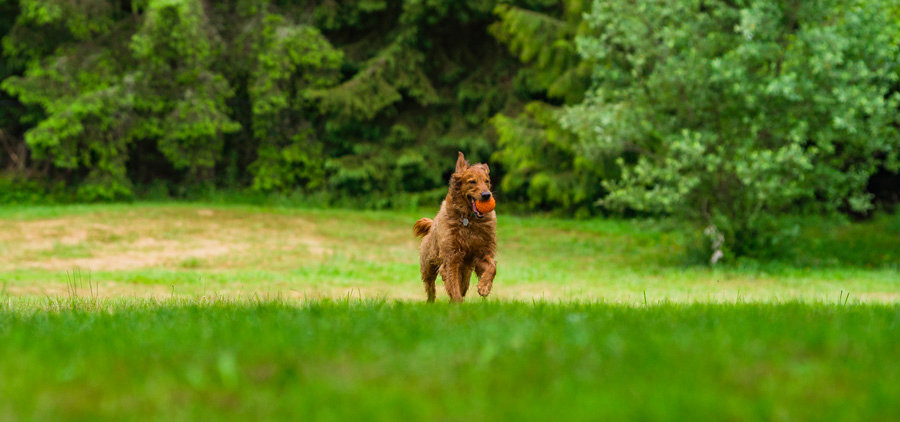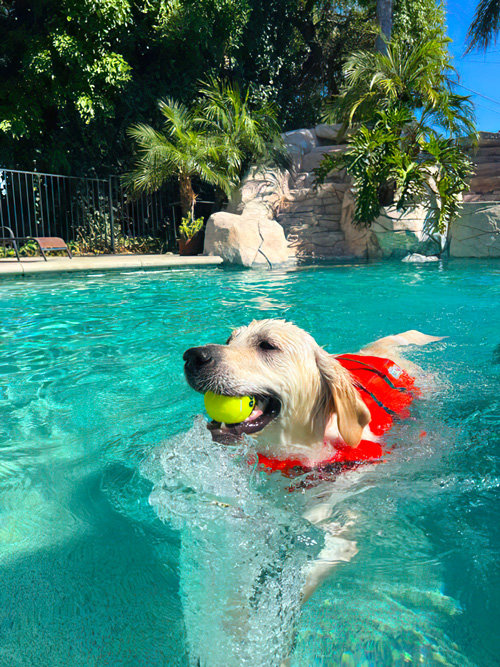Reactive Dog Training: A Practical Guide for Owners

Living with a reactive dog can make simple outings feel like a challenge. We get it. But what if those everyday adventures could become enjoyable again? This post offers practical advice and resources for reactive dog training, helping you understand your dog's triggers and build positive experiences. We'll cover finding the right trainer, creating a supportive home environment, and even discovering where to walk a reactive dog so you can both start enjoying calmer walks together. Let's work towards a happier, less stressful life with your furry friend.
You and your pup deserve to get out of the house and explore the world around you! But how do you know what the environment will be like? What if you encounter out-of-control off-leash dogs? Or startling noises? Or something else you can’t prepare for that triggers reactive behavior from your canine companion?
While no plan ever goes perfectly, there are places to bring your reactive dog for exercise, training, and enrichment where you’re unlikely to run into many problems.
Read on for:
- A brief definition of what “reactive” means in the dog world
- Tips to stay on top of your surroundings
- Renting a private dog park for your reactive dog
- Visiting popular spots at less busy times
- Exploring industrial parks
- Adventuring on public land
- Enrolling in a reactive dog training class
- Resources to train through dog reactivity
What Is a Reactive Dog?
While every living animal is constantly “reacting” to its environment—you might put on a sweatshirt when you notice you’re cold or head to open the door when you hear a knock—“reactive” is used in the dog training world to describe pets who overreact to stimuli in their environments.
A reactive dog likely experiences raised cortisol levels every time they encounter their triggers.
Key Takeaways
- Understand your reactive dog's needs: Reactivity often stems from fear, frustration, or underlying medical conditions. Recognizing the root cause helps create a tailored training plan.
- A supportive environment is key: Minimize exposure to triggers, provide plenty of physical and mental enrichment, and build your dog's confidence with positive reinforcement.
- Safe spaces make a world of difference: Explore private dog parks (like Sniffspot!), quiet industrial areas, or less-trafficked public lands during off-peak hours for stress-free outings.
Common Reactive Dog Behaviors
Reactivity generally encompasses a range of undesirable aggressive or defensive behaviors (barking, growling, lunging, jumping, pulling) in situations that typically don’t warrant them in our minds (triggers are behaving normally in a non threatening way) but that are overwhelming or scary to our dogs.
Basically: Your puppy who woofs once or twice when startled? They wouldn’t be diagnosed with reactivity. One who barks, growls, and lunges at every other dog they see out on a walk, on the other hand? They would be considered reactive.
Types of Reactivity in Dogs
Aggressive behavior on leash can usually be identified as either fear-based leash reactivity or frustration-based leash reactivity.
Understanding the Root Causes of Reactivity
It’s important to understand why your dog is reactive. Though sometimes chalked up to personality, reactivity is usually caused by a combination of factors, including genetics, early socialization, and even underlying medical conditions. By understanding these root causes, you can better address your dog’s behavior and create a more positive experience for both of you.
Genetics and Reactivity
Genetics can influence temperament, but they aren’t the sole determinant of a dog’s behavior. While some breeds might be predisposed to certain traits, like herding or guarding, these instincts don’t automatically translate to reactivity. More often, it’s a lack of appropriate socialization, negative experiences, and insufficient training that contribute to reactive behaviors. For more information on managing reactive behavior, check out Cornell University’s College of Veterinary Medicine’s resources.
Early Experiences and Socialization
Early socialization plays a crucial role in shaping a dog's responses to their environment. Positive experiences during puppyhood can help them develop into well-adjusted adults. Exposing your dog to various sights, sounds, and situations in a controlled and positive manner can build their confidence and reduce the likelihood of reactivity. Identifying your dog’s triggers—whether it's other dogs, specific noises, or certain environments—is key to managing their reactions. Cornell University’s College of Veterinary Medicine offers additional information on identifying and managing triggers.
If you're looking for safe and controlled environments to socialize your reactive dog, consider checking out Sniffspot's listings of private dog parks. These spaces offer a secure and predictable setting for your dog to explore and interact without the stress of unexpected encounters.
Underlying Medical Conditions
Sometimes, reactivity can stem from underlying medical issues. Pain or discomfort can make a dog more sensitive and prone to reacting defensively. Before embarking on behavioral training, consult with your veterinarian. Ruling out any medical factors ensures you're addressing the right problem. Pack Leader Help offers insights into training reactive dogs, emphasizing the importance of considering medical factors.
Stay Aware of Your Reactive Dog's Surroundings
Even if you’re heading to an area that’s usually quieter or has more space for reactive dogs, it’s still important to stay aware of your surroundings when out with your in-training pup.
Being proactive and observant can help you anticipate potential triggers, prevent reactions altogether, and if nothing else manage your dog’s reactions more effectively.
Use your peripheral vision
Train yourself to use your peripheral vision effectively. Be aware of movements and activities in your dog’s surroundings without focusing solely on one point. This is one of the most invaluable training skills for the human end of the leash!
Scan the environment
Regularly scan your surroundings. Look for potential triggers such as other dogs, people, or stimuli that might cause your dog to react. (Even in areas with leash laws it’s sometimes common to encounter off-leash dogs, for example.)
Try to do this in a calm way. Your dog can pick up on your subtle body language cues—so be mindful of the messages you’re sending them! It’s okay to be aware without being frantic. (The right environment, like an open space with great visibility, can make a world of difference here.)
Plan escape routes
When entering new areas, identify possible escape routes or safe spaces where you can move away from potential triggers if necessary. It can be helpful to visit these places without your dog first to get a feel for the layout.
Work with a Trainer for Reactive Dog Help
If you’re struggling, we recommend consulting with a professional dog trainer or behaviorist to develop a tailored plan for your reactive dog. Consistent, positive experiences in controlled environments can help build confidence and improve behavior over time!
And as always: Prioritize safety for your dog, yourself, and others when choosing locations for outings.
Effective Training Techniques for Reactive Dogs
Reactivity training focuses on changing your dog’s emotional response to triggers. Here are some common training methods many owners of reactive dogs find helpful:
Counter-Conditioning and Desensitization
This dynamic duo is a cornerstone of reactivity training. Counter-conditioning involves changing your dog’s negative associations with triggers into positive ones. Think pairing the sight of another dog with something awesome, like tasty treats or a favorite toy. Desensitization works hand-in-hand, gradually exposing your dog to triggers at a safe distance and intensity, then slowly decreasing the distance as they remain calm.
Engage/Disengage Game
The Engage/Disengage Game teaches your dog to check in with you when they see a trigger. First, reward them with high-value treats for simply looking at the trigger, then for looking back at you within a few seconds. This helps them learn that focusing on you is more rewarding than reacting to the trigger. This game helps build a strong connection and reinforces that you're their source of safety and guidance.
Look at That (LAT)
Look at That (LAT) is similar to the Engage/Disengage Game. It rewards your dog for looking away from a trigger and back at you, reinforcing that you’re their safe space and source of good things. This helps your dog learn to make a positive choice—to look at you—instead of reacting to the trigger.
The Three-Second Rule
The Three-Second Rule offers a simple guideline for greetings, especially helpful for dogs who struggle with social interactions. Keep initial interactions brief—just a quick "hello" lasting three seconds—then create space. This prevents overstimulation and helps your dog practice polite greetings without feeling overwhelmed.
Calmness Training
Calmness training teaches your dog that calm behavior gets them what they want. Whether it's going outside, getting a toy, or receiving attention, reward calm behavior and avoid reinforcing demanding or reactive behavior. This helps your dog understand that being calm is the most effective way to get their needs met.
Impulse Control Training
Impulse control is essential for reactive dogs. Teach your dog to wait for things, rather than reacting immediately to stimuli like treats, toys, or other animals. This builds self-control and helps them manage their reactivity in challenging situations. Simple exercises like "leave it" or "wait" can be incredibly effective.
Creating a Supportive Environment for Your Reactive Dog
Training is more effective when paired with a supportive environment. Here’s how to create one:
Managing the Environment: Avoiding Triggers and Creating Safe Spaces
While you’re working on training, minimize exposure to known triggers. This reduces stress and prevents reinforcement of reactive behaviors. Create a safe space at home—a quiet den or comfortable bed—where your dog can retreat and decompress when feeling overwhelmed.
Providing Mental Enrichment and Physical Exercise
A tired dog is a well-behaved dog. Provide plenty of mental and physical enrichment to reduce anxiety and boredom, which can contribute to reactivity. Puzzle toys, chews, scent work, and regular exercise can make a big difference in your dog's overall well-being.
Building Your Dog's Confidence
Building your dog’s confidence is crucial for managing reactivity. Identify what makes them uncomfortable and work on desensitizing them to those triggers at their own pace. Positive reinforcement and successful experiences will help them feel more secure in various situations.
Choosing the Right Trainer for Your Reactive Dog
A qualified trainer can be invaluable in your journey with a reactive dog. Here’s what to look for:
Focus on Positive Reinforcement Methods
Choose a trainer who uses positive reinforcement methods. These methods are more effective and humane than punishment-based approaches, building a stronger bond with your dog and fostering trust.
Trainer Qualifications and Experience
Look for a trainer with experience in reactive dog training and relevant certifications, such as a Certified Professional Dog Trainer (CPDT-KA) or a Certified Applied Animal Behaviorist (CAAB or ACAAB). A qualified professional can provide tailored guidance and support based on your dog's specific needs.
Where to Walk a Reactive Dog
Finding the right walking spots for a reactive dog can be challenging. Here are some ideas:
Private Dog Parks
Private dog parks offer a controlled environment where you can avoid unexpected encounters and let your dog relax and play without the stress of unknown dogs or unpredictable situations. Sniffspot connects dog owners with private dog parks in various locations, providing a safe and enriching experience for reactive dogs.
Walking During Off-Peak Hours
Visit popular dog-walking spots during off-peak hours when there are fewer people and dogs around. Early mornings or weekdays are often quieter, allowing your dog to enjoy the space with fewer potential triggers.
Industrial Parks
Many industrial parks are dog-friendly outside of business hours. These areas often have wide-open spaces and fewer distractions, making them ideal for reactive dogs who need room to roam without feeling overwhelmed by other dogs or people.
Exploring Public Lands
Explore public lands like hiking trails or nature reserves. Look for trails that are less trafficked and offer opportunities for your dog to explore at a safe distance from others. Check regulations beforehand to ensure dogs are allowed and be prepared to leash your dog if necessary to maintain a safe and positive experience.
Rent a Private Dog Park for More Freedom
Seek out enclosed areas designed for dogs where you have more control over the environment. Private dog parks and facilities that offer secure play spaces—like dog training or daycare buildings outside of business hours—are great options.
Sniffspot is a network of private dog parks designed with reactive dogs in mind from the very start. You and your dog can choose a yard, hiking trail, swimming pool, or other fun landscape where you won’t encounter any other people or dogs!
If there isn’t a Sniffspot right in your town? It could be a fun day trip option. More hosts sign up every day, so keep checking back in your area.
Walk Your Reactive Dog During Off-Peak Hours
Look for parks, trails, and other green spaces that are less crowded especially during off hours. This can reduce the chances of unexpected encounters with strange people or other dogs.
You might also visit empty playgrounds or sports fields during non-peak hours. (If you aren’t sure dogs are allowed, consider calling your local parks department ahead of time.) These areas are often fenced in and can provide a controlled environment for both on-leash or off-leash exercise.
Where to Walk a Reactive Dog: Industrial Parks
We know it doesn’t sound glamorous, but hear us out. Walking your reactive dog in a quiet industrial park can be a great outing!
Strip mall areas, complexes off of highway exits, or other collections of stores without a lot of foot traffic (like grocery shops) can allow you to expose your dog to different situations from afar. In many cases, you’ll have the whole place to yourself. If nothing else, you can better control the distance from which your dog sees any triggers.
Note that while industrial parks may have fewer people and dogs compared to residential areas, they can still have unexpected stimuli such as loud noises, machinery, or unusual smells, though. Choosing quieter times of the day to walk your dog—such as early mornings or late evenings when industrial activities are minimal—can help.
Explore Public Lands with Your Reactive Dog
Taking a reactive dog to public lands—like Bureau of Land Management (BLM) areas or national forests—is another great option if you have access to these environments. It’s usually possible to find trails and forest roads to explore without too many other visitors around!
Check and adhere to the specific leash regulations of the public land you plan to visit. Some areas may require dogs to be on a leash at all times. Others allow off-leash activities in designated areas. The more we respect our public lands, the better we’ll all be able to enjoy them.
Find a Reactive Dog Training Class
Enroll in training classes or workshops specifically designed for reactive dogs. These controlled environments provide structured training and socialization opportunities—all under the guidance of experienced trainers. You can build positive associations and prevent any safety issues!
Need Help with Reactive Dog Training?
Training a reactive dog isn’t a linear process. There will be ups and downs along the journey! While it’s important to realize your pet might never enjoy some of the “normal” things other dogs do (like visiting traditional dog parks or crowded restaurant patios), they absolutely can still have a full life.
Together you’ll learn, grow, and adjust along the way as you encounter new environments at your dog’s pace. The reactive dog community is cheering for you!
When in doubt about your dog’s reactivity training? Reach out to a local force-free trainer for in-person guidance or a certified professional who offers virtual sessions to guide you from afar. Behavior modification training can be incredibly effective to reduce both off and on leash reactions.
Trainers Who Reviewed This Article
There is so much misinformation out there. We want to make sure we only provide the highest quality information to our community.
This is the trainer that reviewed this article:
Penny Locke
Proudly offering Positive Reinforcement & Force-free Dog Training
www.allabout-canines.com
Additional Resources for Reactive Dog Owners
Living with and caring for a reactive dog can feel isolating. Building a support network is key, and thankfully, many resources are available to help you and your pup.
Online Courses and Communities
Online courses can provide structured learning and support from certified dog trainers. Many also offer community features, which can be invaluable for sharing experiences, asking questions, and celebrating successes with other reactive dog owners. Connecting with others who truly understand the challenges and joys of reactive dog ownership can make a world of difference. A quick online search will reveal a variety of options for online courses and communities dedicated to reactive dogs. Look for resources that emphasize positive reinforcement methods and offer practical advice for managing reactivity in different situations. Here are a few online communities to get you started.
Recommended Books and Articles
Books and articles by experienced trainers and behaviorists can offer deeper insights into canine behavior and reactivity. These resources can help you understand the underlying causes of reactivity, learn effective training techniques, and develop a personalized training plan for your dog. Training classes or workshops specifically designed for reactive dogs are another great option. These controlled environments provide structured training and socialization opportunities under the guidance of experienced trainers. Remember, training a reactive dog isn’t a linear process. There will be ups and downs along the way. It’s important to realize your pet might never enjoy some of the “normal” things other dogs do (like visiting traditional dog parks or crowded restaurant patios), but they absolutely can still have a full life. Focus on creating positive experiences for your dog and celebrating small victories.
Sniffspot: A Safe Space for Reactive Dogs
If you’re looking for a safe and controlled environment for your reactive dog to play and explore, Sniffspot offers a unique solution. Sniffspot is a network of private dog parks where you can rent a secure space for your dog without the stress of encountering other dogs or unfamiliar people. This can be a game-changer for reactive dogs who need a predictable and controlled environment to feel comfortable.
With Sniffspot, you can choose from a variety of locations, including fenced yards, fields, and even dog water parks. Browse the Sniffspot listings to find the perfect spot for your dog's next adventure. Having a safe space where your dog can relax and enjoy themselves can be incredibly beneficial for their overall well-being and can make a significant difference in your journey with a reactive dog.
Related Articles
- Dog Barrier Reactivity and Frustration Training | Sniffspot
- Engaging Activities for Reactive Dogs: Building Confidence & Reducing Anxiety
- How to Train a Reactive Dog: Beginner’s Guide + Tips
- Dog Reactivity Chart | Understand and Fix Dog Reactivity
- Definitive Guide: What is Dog Reactivity, Percentages and Symptoms
Frequently Asked Questions
Is my dog reactive if they bark at other dogs sometimes?
Not necessarily. Occasional barking doesn't automatically mean your dog is reactive. True reactivity involves a pattern of excessive, over-the-top responses to common triggers, like barking, lunging, or growling in situations where most dogs wouldn't react so strongly. If you're unsure, it's always a good idea to consult with a certified trainer or behaviorist for a professional assessment.
My dog is reactive. Will they ever be "normal"?
It's important to have realistic expectations. While many reactive dogs make significant progress with training and management, some may never be completely comfortable in every situation. The goal is to help your dog feel safer and more confident, reducing the frequency and intensity of their reactions. Focus on creating positive experiences and celebrating even small improvements. A "normal" life for a reactive dog might look different, but it can still be a full and happy one.
What's the best way to find a qualified trainer for a reactive dog?
Look for trainers who emphasize positive reinforcement methods and avoid punishment-based techniques. Check for certifications like CPDT-KA or CAAB/ACAAB, which indicate a commitment to continuing education and ethical practices. Ask about their experience with reactive dogs specifically. A good trainer will tailor their approach to your dog's individual needs and provide ongoing support.
Besides training, what else can I do to help my reactive dog?
Creating a supportive environment is crucial. Manage your dog's surroundings by minimizing exposure to known triggers as much as possible. Provide plenty of mental and physical enrichment to reduce anxiety and boredom. Establish a safe space at home where your dog can retreat when feeling overwhelmed. Building your dog's confidence through positive experiences is also essential.
Where are some safe places to walk my reactive dog?
Private dog parks offer a controlled environment where you can avoid unexpected encounters. Consider visiting public parks or trails during off-peak hours when there are fewer people and dogs around. Industrial parks or quiet strip malls can also be good options, offering wide-open spaces with fewer distractions. Always check leash laws and be prepared to adjust your plans if needed. Prioritizing your dog's safety and comfort is key.
Most recent articles
Related articles
Top dog guides per area
Dog training guides

Dog Food Aggression: Why You Shouldn't Punish It
Does your dog ever growl when you walk by their food dish? Maybe they get possessive of treats, carrying them far away and giving you side-eye when you start to approach — or snarling at your other pets or children if they get too close.

Best Dog Fields in the US: 25+ Wide-Open Spaces for Your Pup to Run Free
The best dog fields in the US offer something that traditional enclosed parks simply can't match: acres of open space where your pup can truly stretch their legs and run at full speed. From Colorado's 470-acre prairie meadows to Tennessee's award-winning "Outback," these wide-open spaces allow dogs to roam, explore, and exercise naturally while engaging instincts that cramped urban parks suppress.

The Ultimate Guide to Scent Training for Dogs
Your dog's nose is an amazing tool. Did you know they have 40 times the olfactory receptors than humans? Scent training for dogs taps into this superpower, turning everyday moments into exciting sniff-fests. It's enriching for all types of dogs – reactive, shy, or simply adventurous. Ready to explore the world of scent work for dogs? Let's get started.

Service Dog Training Costs: DIY vs. Pro
More than 80 million Americans rely on their service dogs to help them navigate the world. Task-trained assistance animals perform a huge range of life-changing—in many cases, life-saving—services: These dogs act as eyes for visually impaired handlers, provide mobility support, alert to seizures and blood sugar crashes, interrupt anxiety attacks, remind their people to take medications, and so much more.

How to Deal With Puppy Potty Training Regression
You thought those dreaded middle-of-the-night potty breaks were over. You were finally free from cleaning up puppy puddles. Then, suddenly, your furry friend starts having accidents again. It's frustrating, right? This puppy potty training regression is more common than you think. Don't worry; we'll help you get your pup back on track. We'll cover the common causes, offer practical solutions, and give you actionable steps to tackle this challenge together.

Dirty Dog Syndrome: Causes, Solutions, and Prevention
It's a cringe-worthy moment every dog owner dreads: your furry friend chowing down on something truly disgusting. If your dog has a penchant for poop, you're dealing with coprophagia. It's more common than you think, and thankfully, often manageable. This article explores the reasons behind dirty dog syndrome, from instinct to learned behavior. We'll also give you practical tips to help break this unpleasant habit.

How to Train Your Rescue Dog: A Complete Guide
* All Sniffspot articles are reviewed by certified trainers for quality, please see bottom of article for details *
Dog enrichment guides

Best Dog Water Parks in the US: 15+ Amazing Splash Destinations for Your Pup
Do you have a water-loving dog looking to burn some energy? There are countless dog parks to visit throughout our country — but some of them become far too hot in the midday sun to be safe for your pets to play. That’s why we’ve put together a list of some of the best dog water parks throughout the United States! At these locations, your pup can frolic, splash, and swim to their heart’s content.

Best Dog Fields in the US: 25+ Wide-Open Spaces for Your Pup to Run Free
The best dog fields in the US offer something that traditional enclosed parks simply can't match: acres of open space where your pup can truly stretch their legs and run at full speed. From Colorado's 470-acre prairie meadows to Tennessee's award-winning "Outback," these wide-open spaces allow dogs to roam, explore, and exercise naturally while engaging instincts that cramped urban parks suppress.

Best Toys for Herding Dogs: Keeping Your Pup Happy & Engaged
Herding dogs are amazing, intelligent companions. But that also means they need more than just a simple game of fetch. Finding the right toys for herding dogs is key to keeping them happy and stimulated. This article explores some of the best toys for herding dogs, including options specifically for breeds like Border Collies and Australian Shepherds. We'll help you discover the perfect herding toys for dogs to tap into their natural instincts and keep them entertained for hours.

Tough Dog Toys for Aggressive Chewers: A Practical Guide
Does your dog destroy every toy you give them? Is your house littered with the remnants of plush toys? Are you tired of wasting money on "indestructible" dog toys for aggressive chewers that don't last? Then this post is for you. We'll cover everything you need to know about finding the best dog toys for aggressive chewers, so you can finally give your pup something safe, durable, and fun.

Daily Exercise Calculator: How Much Exercise Does Your Dog Need?
Everyone knows dogs need exercise, but how much is enough? Walks are great, but creating a truly balanced fitness plan means understanding your dog's specific needs. This post helps you develop a daily exercise calculator for your dog, considering breed, age, and lifestyle. We'll cover fun activities, understanding exercise intensity, and recognizing when your pup has had enough. Let's create a plan that keeps your dog happy and healthy!

Complete Guide To Herding With Dogs
* All Sniffspot articles are reviewed by certified trainers for quality, please see bottom of article for details *

Dog Enrichment Activities: The Ultimate Guide
Ever feel like your dog is restless or bored? They may be getting enough exercise, but still need more. That's where enrichment activities for dogs come in. Giving your dog opportunities to sniff, explore, and problem-solve can make a world of difference. Whether you have a puppy, adult, or senior dog, enriching their environment is key for their well-being. Let's explore how to add cognitive enrichment for dogs, even tailoring activities to your dog's breed with breed specific enrichment and fun enrichment games for dogs.
Dog reactivity guides

Rottweiler Aggression: Truth vs. Myth
Many dogs have gotten a bad reputation over the years for being "dangerous breeds." Rottweilers are among them. Like pit bulls and other large, blocky-headed types of dogs, these powerful and beautiful animals are often assumed to be aggressive.

Best Dog Fields in the US: 25+ Wide-Open Spaces for Your Pup to Run Free
The best dog fields in the US offer something that traditional enclosed parks simply can't match: acres of open space where your pup can truly stretch their legs and run at full speed. From Colorado's 470-acre prairie meadows to Tennessee's award-winning "Outback," these wide-open spaces allow dogs to roam, explore, and exercise naturally while engaging instincts that cramped urban parks suppress.

What Is a Reactive Dog? A Practical Guide for Owners
Does your dog suddenly transform into a barking, lunging Tasmanian devil on walks? It's stressful for both of you. If this sounds familiar, you might have a reactive dog. Understanding what is a reactive dog is the first step to calmer walks. We'll explore the common triggers and give you actionable strategies to manage and modify this behavior. Let's turn those stressful walks into enjoyable outings.

How to Socialize a Reactive Dog: A Step-by-Step Guide
Does your dog display reactivity to other pets or people? Maybe they’re a new rescue pup and are still settling into your home. Or they were sick growing up, so you missed their critical socialization period. Possibly they’ve had a bad experience after being raised as a normal puppy.

What Is a Reactive Dog? A Complete Guide
Is your dog overly excited or fearful around other dogs? Do they bark, lunge, or whine? You might have a reactive dog. Many dog owners face this challenge. Understanding what a reactive dog is is the first step to helping them. This guide explores the common causes of dog reactivity, explains what makes a dog reactive, and offers practical tips and resources. Let's work together to build a stronger bond with your dog and enjoy stress-free walks.

9 Best Online Communities for Reactive Dog Parents
Does your dog's reactivity make walks stressful? You're not alone. Many dog owners face similar challenges. This guide offers practical advice and support for managing reactivity, including finding the best online dog training for reactive dogs. We'll connect you with reactive dog support groups, share training tips, and explore resources like the best dog training app for reactive dogs. Let's build a stronger bond with your dog, together.
* All Sniffspot articles are reviewed by certified trainers for quality, please see bottom of article for details *
How To Groom a Reactive Dog
* All Sniffspot articles are reviewed by certified trainers for quality, please see bottom of article for details *
Sniffspot community guides

The State of Public Dog Parks Across the United States
From 2009 to 2020, there was a 40 percent increase in the development of public dog parks. Designated spots for canine exercise have become commonplace in every major city in North America — many pet owners won’t even consider renting an apartment that doesn’t have its own fenced-in pet area for their canine companions.

Best Dog Fields in the US: 25+ Wide-Open Spaces for Your Pup to Run Free
The best dog fields in the US offer something that traditional enclosed parks simply can't match: acres of open space where your pup can truly stretch their legs and run at full speed. From Colorado's 470-acre prairie meadows to Tennessee's award-winning "Outback," these wide-open spaces allow dogs to roam, explore, and exercise naturally while engaging instincts that cramped urban parks suppress.

How This Family is Affording Their Dream Property Through Renting it Hourly to Dogs
Thousand Oaks, California has been a safe haven for Sniffspot host, Jen, since childhood. Having grown up in busy Santa Barbara, Jen, an introvert from an early age, would seek out solitude and serenity away from tourists attractions and droves of people visiting from elsewhere. “My grandparents own 60 acres about a 30 minute drive from here, and I grew up spending every summer and every holiday visiting them on the ranch,” Jen explained. “In Santa Barbara, we wouldn't go to the beach on the weekend because that's where everybody was, so you'd find places off the beaten path where the tourists weren't. For me, the ranch was just my happy place.”

Host Tips: Ellen K. What Makes Sniffspot Successful for Me
Ellen is the host of Country Pasture Getaway, one of Sniffspot's most popular sniff spots. She has taken the time to write up the lessons she has learned about how to be a great sniff spot host.

How this Oregon Farmer is Making a Business From Renting Her Land to Dogs
Just 20 minutes outside of the busy city of Portland, Oregon, and settled right on the banks of the Columbia River, you’ll find what countless visitors have flocked to the area in search of – mountain views, crisp, clean air, and running water for miles. What you might not expect to find, however, is a hidden oasis designed just for dogs and their people, owned and operated by a farming couple and enjoyed by visitors on two legs, and four.

Host Tips: Fran T. Providing Great Guest Service at our Spot
Fran is the host of Ranch Setting, one of Sniffspot's most popular spots. She has taken the time to write up the lessons she has learned about how to be a great Sniffspot host.

How Sniffspot Helped a Nervous Rescue Work Through His Fears and Change His Family’s Life
This is the story of a family and dog rescuing each other.
Top dog trainers in the US
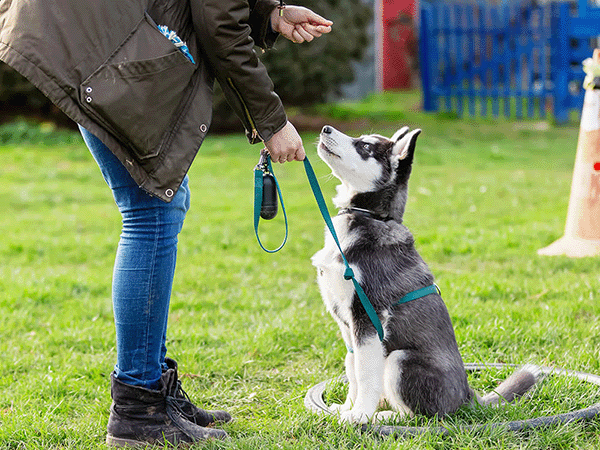
The Best Dog Trainers in the United States of 2025
This is a list of the top dog trainers in the United States, based on votes from the Sniffspot community and the general public.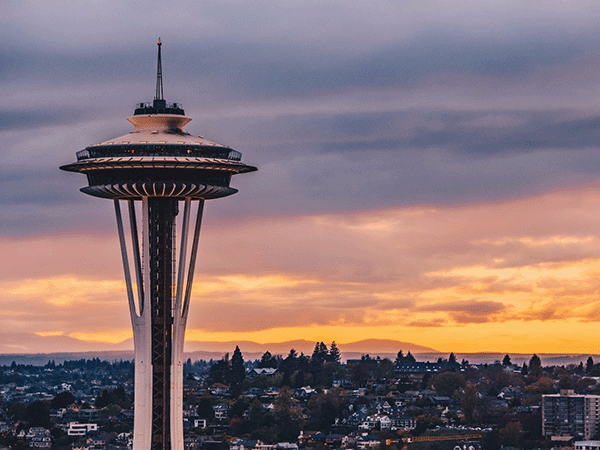
The Best Dog Trainers in Seattle, WA of 2025
This is a list of the top dog trainers in Seattle, WA, based on votes from the Sniffspot community and the general public.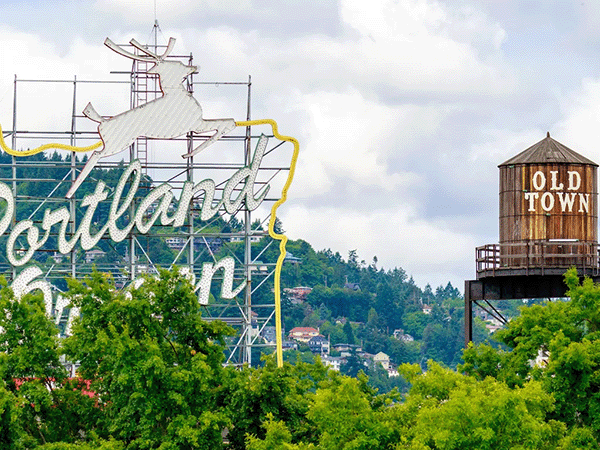
The Best Dog Trainers in Portland, OR of 2025
This is a list of the top dog trainers in Portland, OR, based on votes from the Sniffspot community and the general public.
The Best Dog Trainers in Los Angeles, CA of 2025
This is a list of the top dog trainers in Los Angeles, CA, based on votes from the Sniffspot community and the general public.
The Best Dog Trainers in New York, NY of 2025
This is a list of the top dog trainers in New York, NY, based on votes from the Sniffspot community and the general public.
City dog parks guides

Top 10 Indoor Dog Parks: A US Guide
Looking for a space to play with your dog no matter what the weather’s like outside? Look no further than our list of the best indoor dog parks in the United States! These climate-controlled spaces are growing in popularity as pet ownership increases throughout the country. As a bonus, many of them also offer dog training, boarding, grooming, or daycare services on the premises.

Best Dog Fields in the US: 25+ Wide-Open Spaces for Your Pup to Run Free
The best dog fields in the US offer something that traditional enclosed parks simply can't match: acres of open space where your pup can truly stretch their legs and run at full speed. From Colorado's 470-acre prairie meadows to Tennessee's award-winning "Outback," these wide-open spaces allow dogs to roam, explore, and exercise naturally while engaging instincts that cramped urban parks suppress.

Best Dog Parks in the US: Ultimate Guide to Public & Private Off-Leash Adventures
Is your pup giving you those pleading "let me run free" eyes? Whether you're a new dog parent or a seasoned pro looking for fresh adventures, finding the perfect off-leash paradise for your furry friend can feel ruff! From sun-soaked California beaches where your water-loving lab can make a splash to mountain trails in Vermont where your adventure buddy can chase every scent, we've sniffed out the 15 best dog parks across America.

Dog Parks Near Me: Las Vegas Edition
Looking for the perfect dog park near me in Las Vegas? You're in luck! This guide explores all the best options for your pup, from public dog parks to private dog parks near me on Sniffspot. We'll help you find the ideal spot for playtime, socializing, and fresh air. Plus, we'll cover essential etiquette and safety tips to ensure a happy visit for everyone. Get ready for some tail-wagging fun!

Top Sniffspot Locations: Find the Perfect Dog Park
Looking for the perfect dog park? Whether you need a wide-open public space or a private, fenced-in spot, this guide will help you find the best dog parks across the US. We'll cover top-rated public parks, the perks of private dog parks, and even explore Sniffspot locations – giving your pup a safe and fun place to play. Ready to find your dog's new favorite spot? Let's go!

Sniffspot: Portland's Best Private Dog Parks
Ready to discover Portland's best dog parks? Whether you're looking for a public park or the unique experience of a private Sniffspot, this guide has you covered. We'll help you find the perfect spot for your pup, with tips on what to bring, how to prepare, and even understanding dog body language. Plus, we'll explore some top Portland dog parks, including public and Sniffspot options, so you can plan your next dog-friendly adventure in the City of Roses.
Portland Dog Parks: Public & Private Options
This page is about public city dog parks and also includes Sniffspot private dog parks. Sniffspot is the largest network of private dog parks for rent in the world!
Small Dog Park Guide: Tips for Finding the Perfect Spot
Finding the perfect dog park for your small breed can be ruff! Big dog parks can be overwhelming, even dangerous, for little pups. This comprehensive guide helps you sniff out the best small dog parks for your pint-sized companion, covering everything from essential safety checklists to top recommendations for small dog parks across the US—including both public spots and private dog parks.
Dogs breeds

German Shepherd Dogs: Insights From Real Dog Owners
The German Shepherd Dog (GSDs) are known for their intelligence, loyalty, and striking appearance. They're also incredibly versatile, excelling as working dogs and devoted family companions. This guide covers everything you need to know about GSDs, from understanding their unique traits and rich history to practical advice on training and care. So, whether you're a seasoned GSD owner or just starting your research, let's explore this remarkable breed together.

Best Dog Fields in the US: 25+ Wide-Open Spaces for Your Pup to Run Free
The best dog fields in the US offer something that traditional enclosed parks simply can't match: acres of open space where your pup can truly stretch their legs and run at full speed. From Colorado's 470-acre prairie meadows to Tennessee's award-winning "Outback," these wide-open spaces allow dogs to roam, explore, and exercise naturally while engaging instincts that cramped urban parks suppress.

Labrador Retriever: Ultimate Guide by Owners
Discover the Labrador Retriever, a breed celebrated for its playful nature, affectionate temperament, and trainability. Labradors are known for their friendly demeanor and adaptability, making them perfect family companions and versatile working dogs. As one of the most popular types of retrievers, Labs are ideal companions for various lifestyles and are recognized by the American Kennel Club (AKC) as an excellent breed for families.

Golden Retriever Advice: The Complete Owner's Guide
Golden Retrievers: they're gorgeous, playful, and incredibly popular. But before you welcome one into your home, you need the right golden retriever advice. This guide draws on the wisdom of nearly 10,000 Golden Retriever owners, offering practical tips for caring for these affectionate dogs. From understanding their high energy levels to mastering grooming and training, we'll cover everything you need to know. So whether you're already a devoted Golden parent or just starting your research, get ready to learn how to give your furry friend the best possible care.

American Staffordshire Terrier: Your Complete Guide
Think American Staffordshire Terriers are tough? Think again. While their muscular build might intimidate some, these dogs are known for their playful and loyal personalities. This guide draws on the experience of nearly 10,000 AmStaff owners to reveal the truth about this often misunderstood breed. Want to learn more about caring for an American Staffordshire Terrier? You're in the right place.

Australian Shepherd Facts: Breed Info & Care Guide
Discover the Australian Shepherd, an AKC breed celebrated for its trainable, playful, and affectionate nature. Despite its name, the Australian Shepherd is actually a native breed to the United States, originally developed to breed on farms and ranches. Considered a medium dog, Australian Shepherds were bred for herding beginning in the 1950s. As one of the high-energy breeds, Aussies are known for their boundless energy and need for regular exercise, including aerobic exercise.

Essential Husky Facts for Owners: Breed Guide
Discover the Siberian Husky, a breed celebrated for its curious, intelligent, and loyal nature. Considered a medium-sized dog, Siberian Huskies were originally bred in Russia for sledding, beginning in the early 20th Century. Today, they're one of the most popular active breeds in North America.










